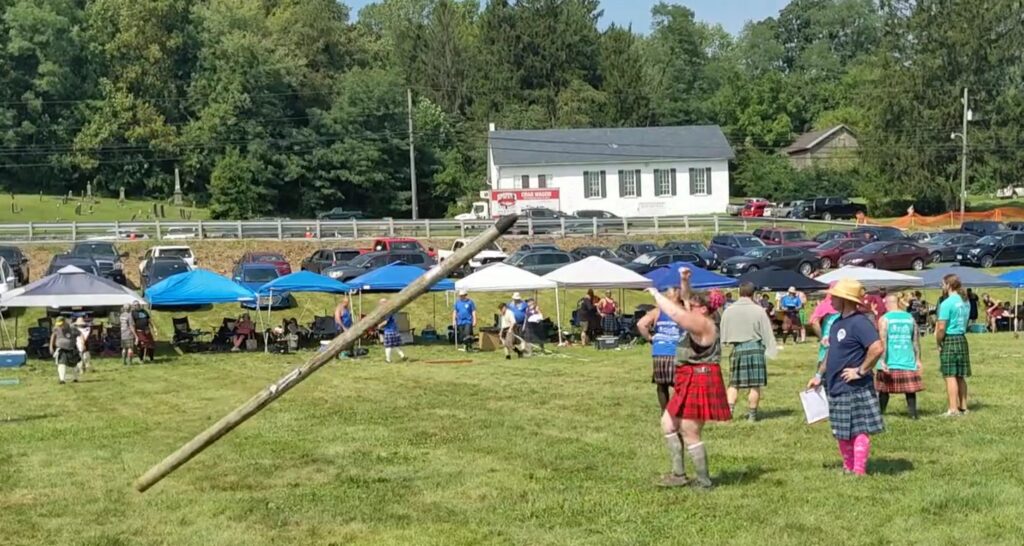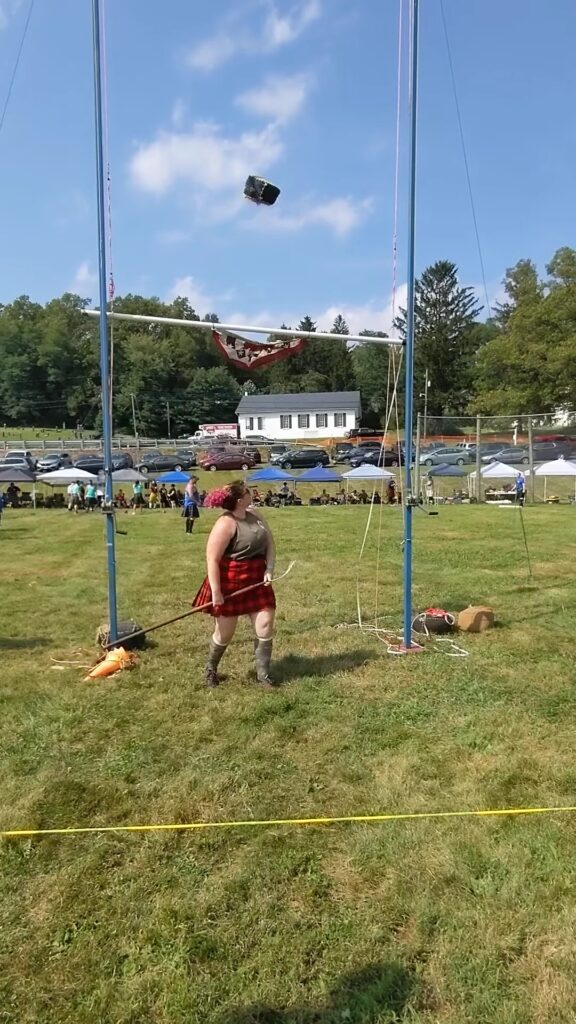A few weeks ago, I competed in my first Highland Games, and a lot of folks have had questions about it! The origins of Highland Games can be traced back to ancient Scotland, and now are organized all over the world. Typically, competitors wear kilts, an obvious nod to the Scottish origins of the games. That said, you don’t have to be Scottish to participate! I found the Highland Games athletes to be as welcoming and inclusive as any group of competitors.

On to the specifics of the games! Highland Games are characterized by a series of traditional athletic events that test participants’ strength, agility, and skill. These events often include:
Caber Toss: Perhaps one of the most iconic events, participants heave a massive log (caber) end-over-end, aiming to flip it to land as close to a straight line as possible. That is called a “12 o’clock”. The goal on caber isn’t to make it go far or high, but to get a perfect end-over-end flip.

Open & Braemar Stone: Similar to shot put, participants hurl a heavy stone as far as they can. Open stone permits a shuffle or glide in to the throw, and Braemar stone is thrown with feet being planted on the ground.
Hammer Throw: Competitors swing a heavy weight attached to a handle and release it to see who can throw it the farthest. This is usually thrown with your feet firmly planted (some people wear boots with blades on the front to secure them to the ground!), and with your back to the field.
Weight for Height: Athletes toss a weight over a high bar, with the bar gradually increasing in height. The one who clears the highest bar wins. This is usually called WOB, meaning weight over bar. If you’ve done sandbag throws in strongman, this is pretty similar, except you throw the weight with one hand instead of two.
Weight for Distance: In this event, a weight attached to a ring by a short chain is thrown. Generally, competitors will throw both a light and a heavy weight, with the specific weights varying by class. WFD technique usually involves a spin into a release, with the goal being to chuck the thing as far as possible.
Sheaf Toss: This one is usually only done at American games, but it’s a crowd favorite here in the States. Participants chuck a sheaf (like a burlap sack full of hay) over a bar using a pitchfork. The goal is to get the highest throw over the bar.

Some folks will tell you all you need to do a Highland Games is a kilt, and while I suppose you can just go out on a field in your kilt and see what happens, I really suggest finding a way to do some training. I found a small training group in South Jersey on Facebook, and met up with them as much as I could just to get practice on the implements, because they really are odd. The technique for some of the events was pretty challenging for me to pick up. Some of the top throwers in the country come from either a collegiate thrower background or a strongman background. I also continued remote programming with Coach Aaron while I was prepping, and we mostly focused on power, speed, and stability. No matter what sport you’re training for (even the sport of life!), some intentional focus on strength will improve your sport and reduce your risk of injury. Highland Games season is winding down now here in the Northeast, but games will start popping back up around April and go through the summer.
